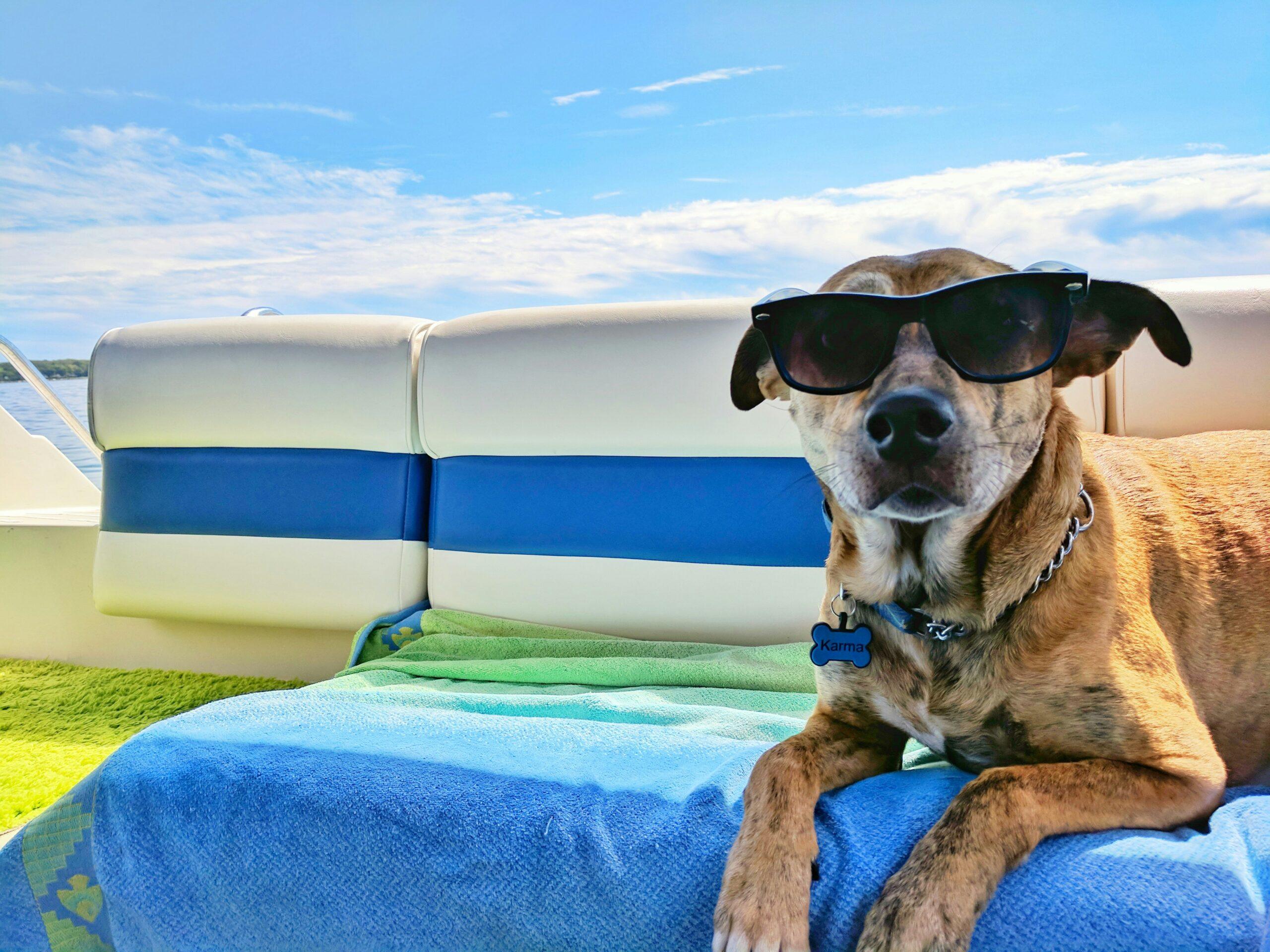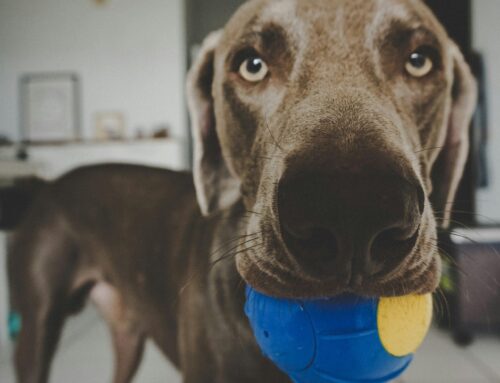Dog Summer Safety
The dog days of summer are here, and that means dog summer safety! As the season blazes on, it’s not just us humans that feel the heat. Our furry friends also feel the scorching rays and humid temperatures. That’s why dog owners need to help keep their pets cool during the dog days of summer. To help provide for your dog’s well-being, here are our tips and tricks to help your dog beat the heat.
Dog Summer Safety During Therapy Visits
When planning therapy dog visits in the summer, keep these tips in mind:
- Parking lots can get extra hot during summer. If you have a small dog, you can carry them into the facility or else try to park as close as you can to the building to prevent the time your dog has to walk on the hot ground. Or bring a pair of booties with you to put on your pup! Guests may even coo at how cute your dog looks in their booties
- Bring water with you to help keep your pup hydrated. It’s possible the facility may not have working air conditioning, so arrive prepared with plenty of water
- Keep any outdoor visits short or look for shaded areas
Do Not Leave Your Dog Unattended In The Car
Do not under any circumstances leave your dog unattended in the car. The temperature inside a car can quickly rise and often feel hotter than the actual temperature outside. This means your dog could suffer heatstroke and dehydration in a matter of minutes. A cracked window can only offer little relief. Please practice caution when exiting a vehicle, make sure your dog is with you.
By taking these preventative measures, you can have a safe and happy summer with your canine companion!
Dog Water Safety
There’s nothing like jumping into a cool body of water on a hot day. While splashing around can be a wonderful experience for canines, we must keep their safety in mind. Not all dogs are natural swimmers and they may encounter hazards in the water such as strong currents or algae. Make sure to supervise your dog around a body of water. You can even put a canine life jacket on them for peace of mind.
Dog Water Safety In Pools
- Supervise your dog whenever they are in the pool.
- Make sure there is a fenced area around the pool to help keep children and pets safe.
- If you are teaching your dog to swim for the first time, gently guide them to the shallow end. They should instinctively move their paws and splash around. If you notice they are using their front paws more than their rear paws, you may need to help hold them by the waist to encourage them to use all sets of paws.
- Make sure your dog doesn’t drink chlorine water.
Dog Water Safety In Lakes and Rivers
- Keep up to date on algae outbreaks in areas near you or when you arrive at a lake or river, look for signs of algae. Algae can be toxic to dogs.
- Do not leave your dog unattended in the water.
- Towel your dog off after their swim to help get rid of any pollutants that they may have caught in the water.
- Do not let your dog swim in the water when the currents are strong.
- Ensure your dog doesn’t drink too much water from a lake or river. The water could be stagnant or contaminated.
- Instead, bring fresh water and a portable water dish for your dog on outdoor outings.
- Watch out for hyponatremia also known as water intoxication. If your dog inhales too much water while swimming or consistently tries to drink the water, it could get them very sick and lead to brain and heart damage, and even be fatal.
- If you notice any symptoms of water intoxication such as nausea, lethargy, drooling, lack of coordination, difficulty breathing, dilated pupils, and seizures, take your pup to the nearest veterinarian emergency clinic.
Dog Water Safety At The Beach
- Before bringing your dog to the beach, make sure it’s a dog-friendly beach and follow any dog rules.
- Keep an eye on your dog in the water, especially if other people are swimming nearby or if there are strong waves.
- Make sure your dog does not drink salt water or ingest seaweed or sand. If your pup has ingested these things and you’re worried, you can take them to the vet or rinse them off after to help remove saltwater from their fur and sand from their paws
- If you notice your dog has become interested in aquatic wildlife like crabs or starfish, bring their focus back to you and lead them to another area of the beach
- Bring fresh water for you and your dog to drink at the beach.
- If the temperature is too hot, consider visiting the beach on another day to help prevent heatstroke.
Dog Boat Safety
- If you are bringing your dog on a boat with you, equip them with a fitted canine life jacket with grab handles, adjustable chest straps, and a front float neck.
- Make sure your dog enters and exits the boat from the safest position possible. This should be away from the motor or propellers.
- If it’s your dog’s first time on a boat, let them get comfortable with the boat before heading out to the open waters. Even just sitting in the boat for a few minutes, can help your dog adjust to the experience.
- Make sure the boat isn’t too slippery for you and your furry friend.
- Keep your dog away from any fishing gear.
- Be sure to check the forecast before heading out in the boat.
- Have other passengers accompany you and your dog on a boat. In the event of an emergency, boating alone with your dog can be dangerous.
- Have an emergency plan in place in case an issue occurs. Let the other passengers know how to respond if your dog happens to go overboard.
- If your dog does happen to go overboard, remain calm. Avoid jumping into the water without a life jacket, as it can make the situation worse. You can either:
- Call your dog over to the boat and help maneuver them back into the boat.
- Use an extension pole to grab them from a distance and help them get back in the boat.
- If you are comfortable in the water, you can wear a life jacket to swim with your canine and guide them back to the boat.
Bonus Water Safety Tip
Pet CPR can save your dog’s life. If you notice your dog is not breathing, check for their heartbeat. If you don’t feel a heartbeat, start CPR chest compressions. The American Red Cross has CPR recommendations for your dog, depending on their size.
- For small-chested dogs, place one of your hands directly over your dog’s heart and place your other hand directly on top
- For deep-chested dogs, place your hand over the widest area of your dog’s chest and place your other hand directly on top
- For barrel-chested dogs, lay your dog on their back, place one hand over the widest part of the sternum, and place your other hand directly on top
Then follow these steps from The American Red Cross for all dog sizes:
Step 1: Push hard and push fast at a rate of 100-120 compressions per minute, compressing one-third to one-half the width of your pet’s chest. Do 30 chest compressions.
Step 2: Perform rescue breaths by closing your dog’s mouth and tilting their neck to help extend the airway. Cover your pet’s nose with your mouth and exhale until you see your dog’s chest rise. Then, give a second rescue breath.
Step 3: Continue giving CPR with a cycle of 30 chest compressions and two rescue breaths until your pup starts to breathe on its own.
Step 4: Check again to see if your dog is breathing and if they have a heartbeat. Do this every two minutes.
Step 5: Continue to perform CPR until you make it to a veterinary hospital.
Consider enrolling in a Pet CPR course to learn more about pet first aid to help keep them safe.
Hot Summer Sidewalks
Pavements and asphalt can reach blistering temperatures under the summer sun, which can make the ground uncomfortable for your canine’s sensitive paws. Before going out for a walk, you can test the ground with your hand. If it feels too hot for you, it will be too hot for your pooch. Instead, as a dog summer safety tip, take your pup to the park or an area with a grass-like surface. You can also choose to equip your dog with a pair of booties, which can protect their paws from the heat.
Take Shorter Walks
When taking your dog for a walk in the summer, try to plan it for the early morning or late evening. These are the times of days when the heat is not as strong. Be sure to carry water for your pup on dog days of summer walks and take breaks. Stopping at a shady spot can give both you and your pup a break and help prevent heatstroke. Signs of heatstroke include heavy panting, fatigue, excessive thirst, vomiting, dizziness, salivation, and fever. If you notice your dog is suffering from heatstroke, try to cool them off and take them to a veterinarian.
Cool Summer Treats
Treat your canine to some cool summer treats! Help them beat the heat with DIY fruit pupsicles. There are several recipes you can find online. Or you can freeze your dog’s favorite Kong toy, which can entertain them and help keep them cool. For more treat ideas, read our Homemade Summer Treats To Keep Your Pup Cool blog post.
Keep Up To Date On Vaccinations
Make sure your dog is up to date on vaccinations for the summer. During this sunny season, you and your pup will most likely spend more time outdoors, which can increase the risk of fleas and ticks. You can schedule a visit to see your local veterinarian to ensure your dog gets the necessary vaccinations and flea and tick prevention medications.
Mosquitoes, known to carry heartworm disease, are also a pesky insect to watch out for during the dog days of summer. To help prevent this, use a pet-friendly insect repellent.






